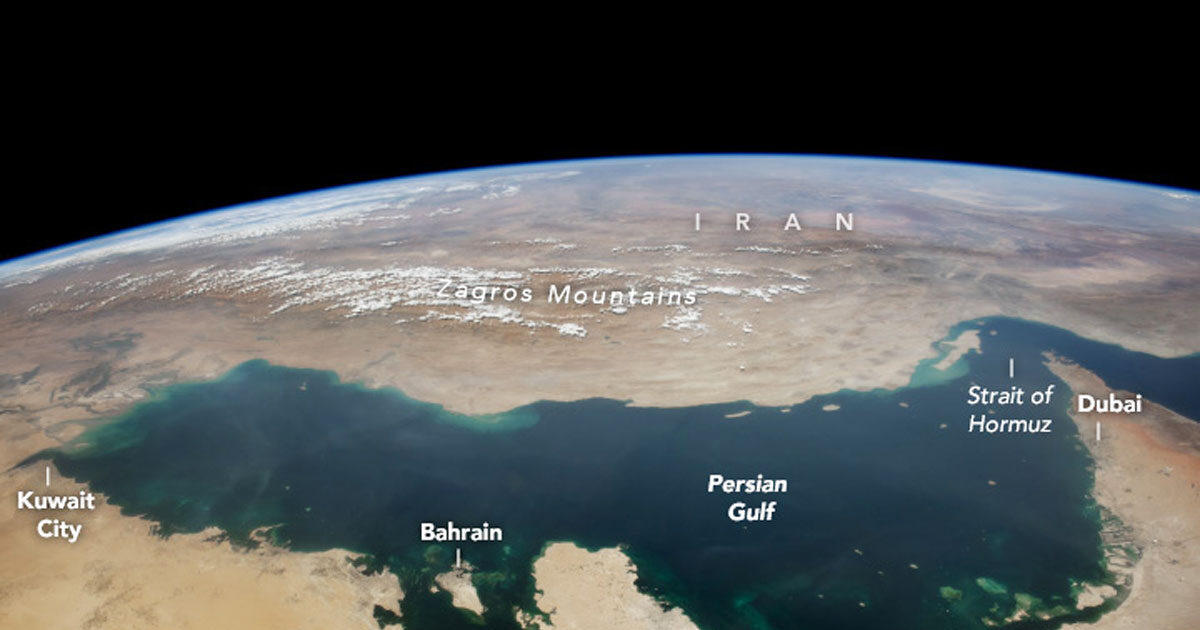After the involvement of USA In Israel War and Iran The international community “holds its breath”, as it comes to the fore the worst scenario that is nothing more than the exclusion of Iran’s straits.
About 20-25% of world oil is being traveled through a hormoz, making it a critical point for energy flows And one move by Iran to close the straits for international navigation as retaliation in US attack would have a direct impact on world shipping and energy security.
On average, over 3,000 tankers, they interact with the straits of the hormone each month, with the majority of them being Greek -owned. According to Lloyd’s List Intelligence / Seasearcher data, the first trimester of 2025 about 1.201 Greek ships passed the straits of the Ormuz.
A total of 271 ships are currently in the wider area of the “dangerous zone”. Of these, 199 ships are located in the Persian Gulf and 72 in the Strait of Ormuz, that is, in the most sensitive and potentially dangerous part of the area. In total, 50 ships out of 271 are Greek -owned, which is highlighted by the Ministry of Maritime and Island Policy, as it directly affects the legal status, protection obligations and the degree of intervention of the Greek state in the event of a possible incident.
Bimco’s security chief, Jakob Larsenhe said that a complete conflict between Israel and Iran with US involvement would probably have resulted in the substantial closure of the straits. But for the time being the straits remain open and so we want to stay.
Global disruption, price launch and suffocation in Asian mainly economies
Commercial circulation continues both east and west, but this could suddenly change very quickly.
THE McGarrydirector of “Control Risks”, said his company appreciated the risk of full closure as unlikely. If Iran dared it, it would trigger an undesirable large reaction from the Arab states of the Gulf, whose trade would be seriously affected.
Stopping flows from the Strait of Ormuz, where about 17-20 million barrels of oil and products per day pass, would cause world disruption, prices launch and suffocation in mainly Asian economies..
Such a scenario, however extreme it may seem, cannot be completely excluded, especially if Iran feels an existential threat.
At the maritime market level, shipping companies and chartere changes are recorded. Several shipowners already say they will be more cautious about loading loads from the Middle East, especially as the collision deepens.
To the “God” the fares
According to the nagers, fare in the area is foreseen to increase further. Already, after 13/6, VLCC fares from Persian to Asia increased ~ 25% to $ 12.85/ton from $ 10.28. The daily price for a VLCC chartered by the Gulf of China has increased from $ 20,000 on June 12, over $ 50,000 after a week reflecting increased risk.
The oil market has recorded significant volatility after military conflict, unfortunately on both sides of a civilian population that started last week and continue. Brent rose up to 11% from the start of transactions on June 16, before around $ 78 a barrel, while West Texas Intermedia is close to $ 76.
Middle Eastern producers carry about 20% of world daily production through straits and prices could increase further if Iran attempts to block them, as customers around the world will try to meet their own energy needs.
Clarksons Research records increased mobility for VLCC tankers launched to safer loading areas, especially in West Africa and the Gulf of Mexico. SPOT fares for routes to Asia have already been strengthened, with some transport being done through the Cape of Good Hope.
About 20-30 container Ships pass everyday from the straits of the Ormuz
The container sector in relation to the tanker sector seems not to be affected at present, as already by the “era” that the Houthi has imposed the peculiar regime on the Red Sea, the container ships have chosen roller coats around the cape, and as a result.
Sea insecurity has caused concern about the stability of the world commercial chains. It is worth noting that as long as the hormoz remains open, the local “short sea” connections to neighboring countries in the crisis region will have no problem. However, it is obvious that if the strait is closed and the local container market will be affected. About 20-30 container ships pass daily from the strait of the hormone in normal conditions.
Developments are also expected to affect the shipping market as well as ships sailing or attempting to sail in the “hot” zones will suffer the 60% “war risks” on a case-by-case basis, which will be known to carry out the shipping costs that will ultimately be paid by either.
The complete closure of the Ormuz Straits, along with 20% of the world’s daily consumption of oil moving through it, remains an extreme scenario for quite obvious reasons. An attempt to close would provoke a dynamic response from the US, but also from the Arab Gulf states.
